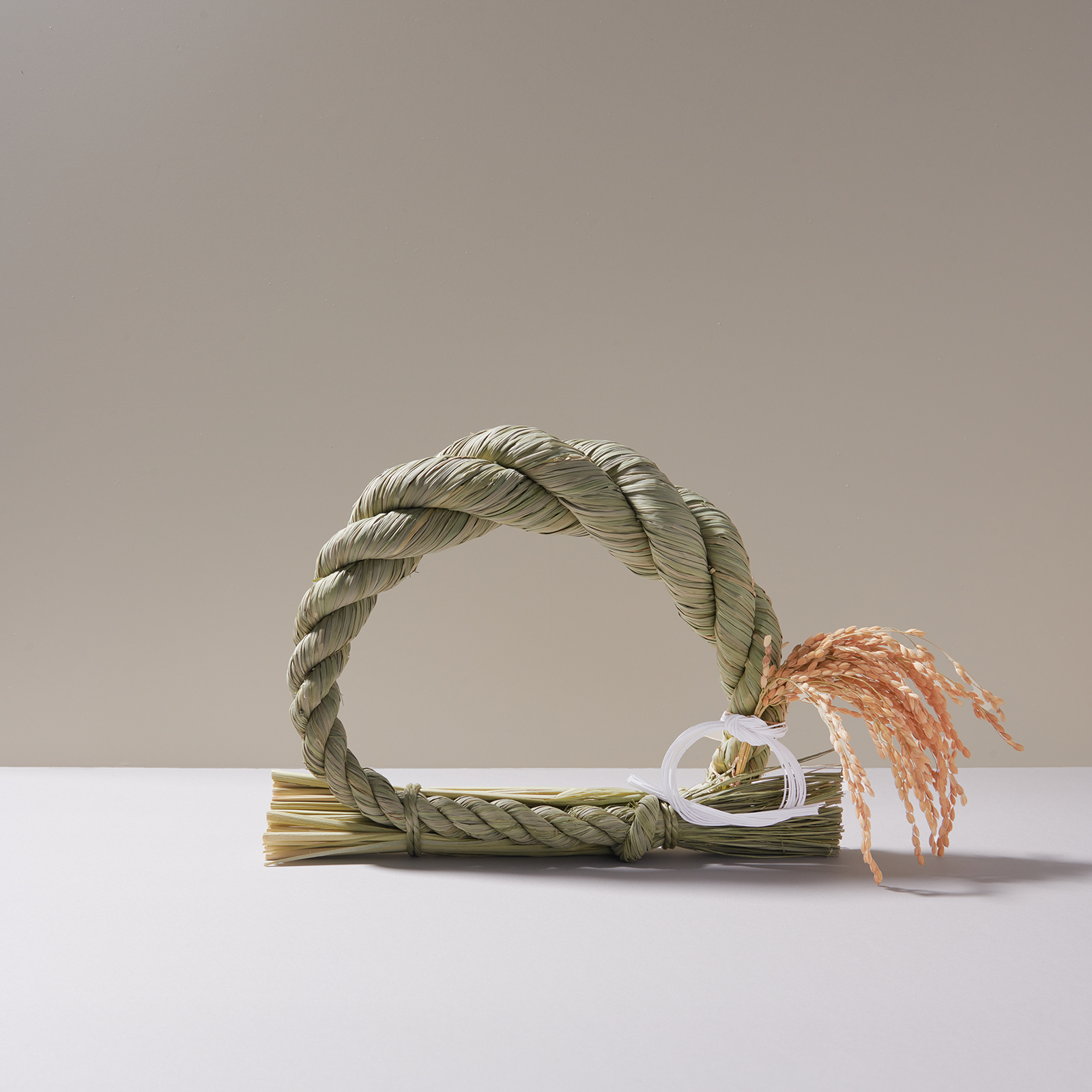Edogawa Craft Stories

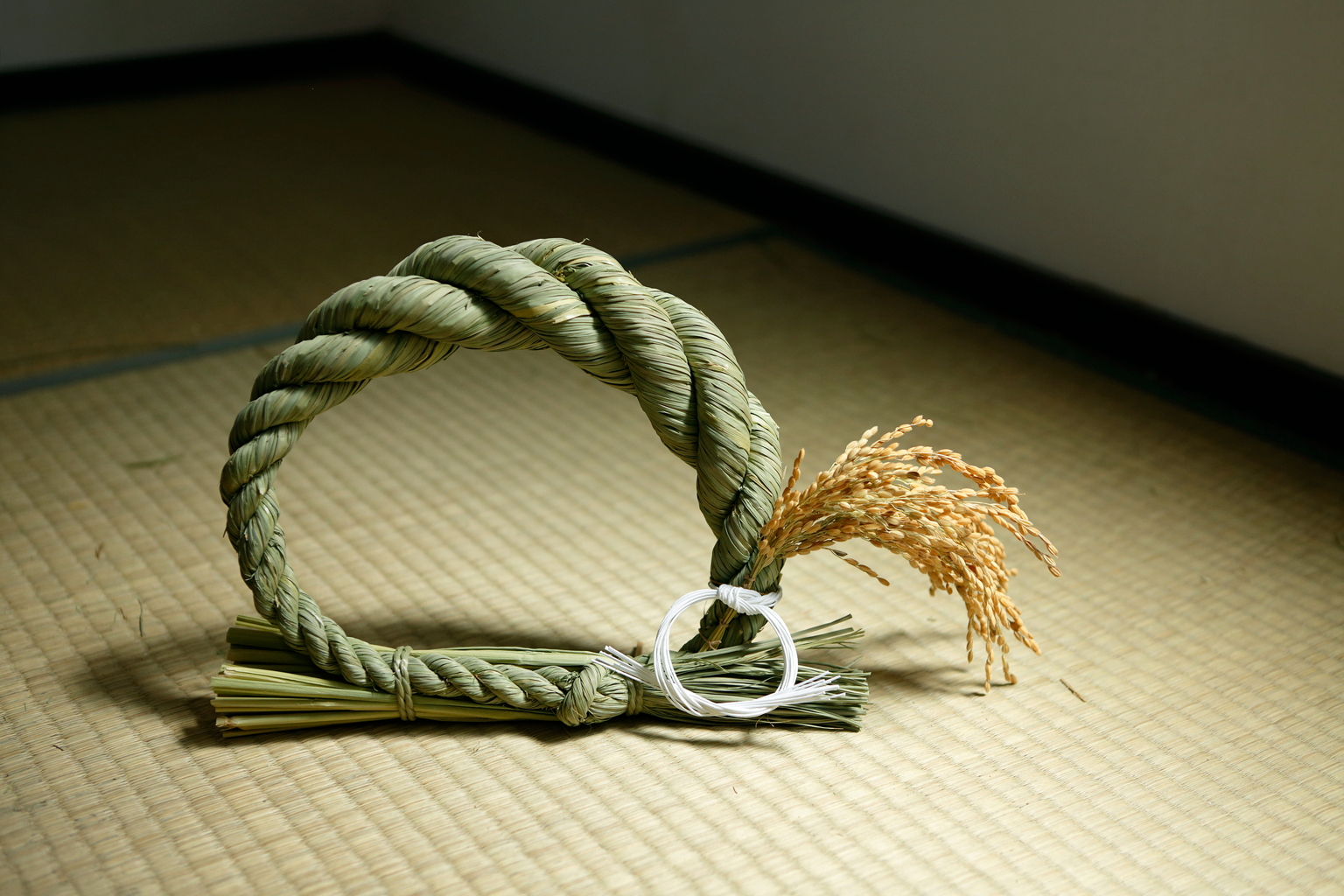
Straw Crafts: An Inheritance of Straw Culture, Tied to the Future with the Spirit of Wa
Straw Crafts
Nawachu
Kubishiro Mitsunobu
Nawaya Chuemon, better known today as Nawachu, is a specialty maker of straw craft products based in Edogawa City, Tokyo. Since its founding in 1907, the company has produced shimenawa (sacred straw ropes), mushiro (straw mats), and other traditional items made from rice straw. Fifth-generation successor Kubishiro Mitsunobu now works to carry forward this 120-year legacy, while also pursuing innovation through the launch of a new shimenawa brand, “minori.” We spoke with Kubishiro about Nawachu’s approach to craft through nawa (rope) and wara (straw), and visited shimenawa craftsman Kishino Akira, who collaborated on the brand’s development.
Rice straw, a byproduct of Japan’s rice cultivation, has long played a vital role in everyday life and traditional culture. It’s used for making shimenawa, essential for Shinto shrines and New Year decorations; for waranawa (binding ropes); and mushiro, laid on floors or ground. Straw is also used in cooking (like straw-seared bonito), soil conditioning, and traction on snow. The forms and uses of straw craft products are remarkably diverse.
。
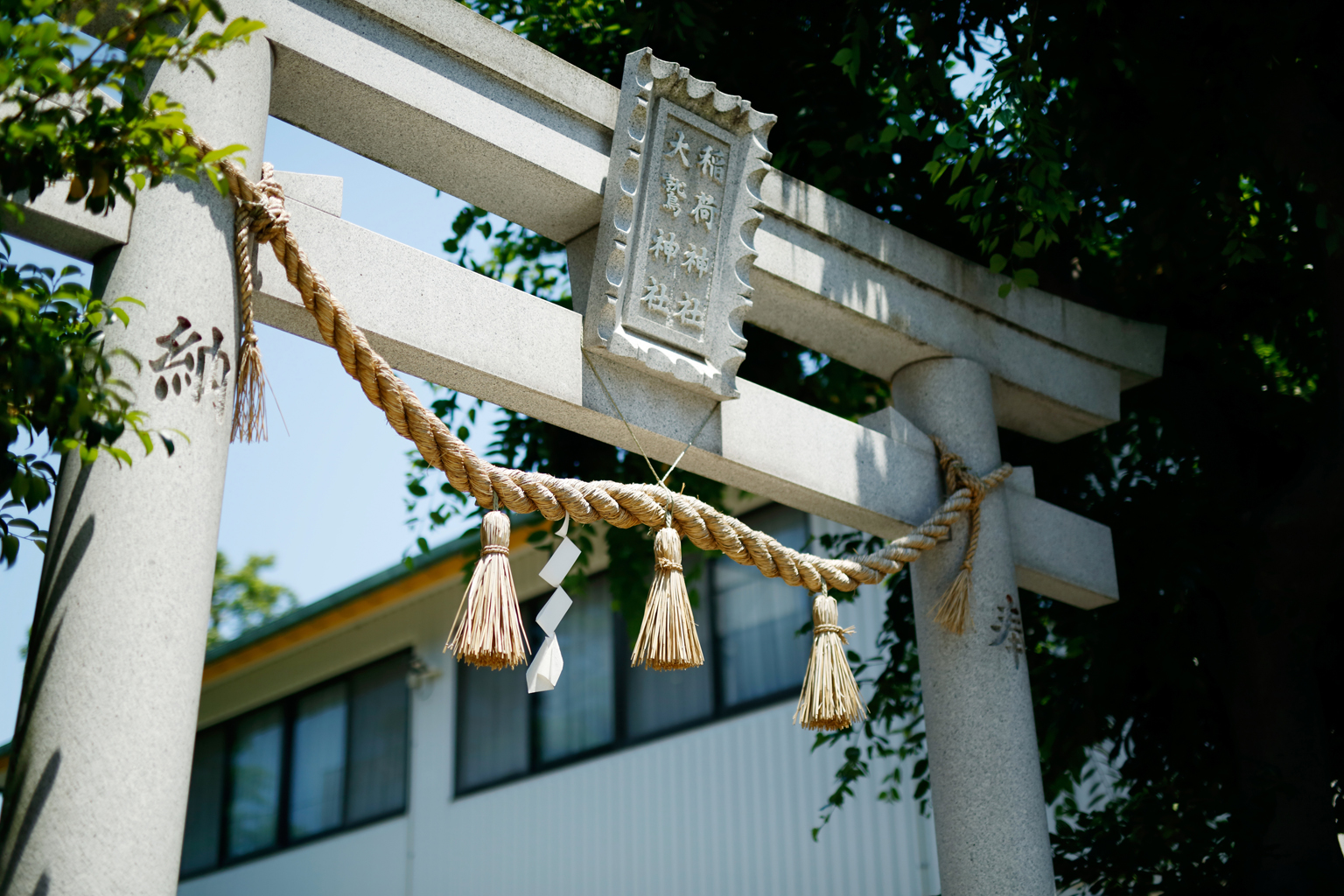
The shimenawa at Koiwa Inari Shrine, located just near the Nawachu office, is one of the many made by the company.
The Enduring Appeal of Straw Crafts in Everyday Life
Nawachu was founded in 1907. As the son of the current company president, Kubishiro Mitsunobu represents the fifth generation working to carry on its legacy. The company’s straw warehouse in Edogawa City is filled with the earthy, nostalgic aroma of rice straw. Around 20 tons of straw are handled each year. Securing quality straw is the first step toward making good products—but it’s not so easy, Kubishiro says.
“Most modern rice farming is done with combine harvesters that cut, thresh, and sort the rice all in one go. That’s great for efficiency, but it shreds the straw, making it unusable for crafts. To get long, intact straw, we rely on farmers who still use small machines called binders. But those are getting rarer every year.”
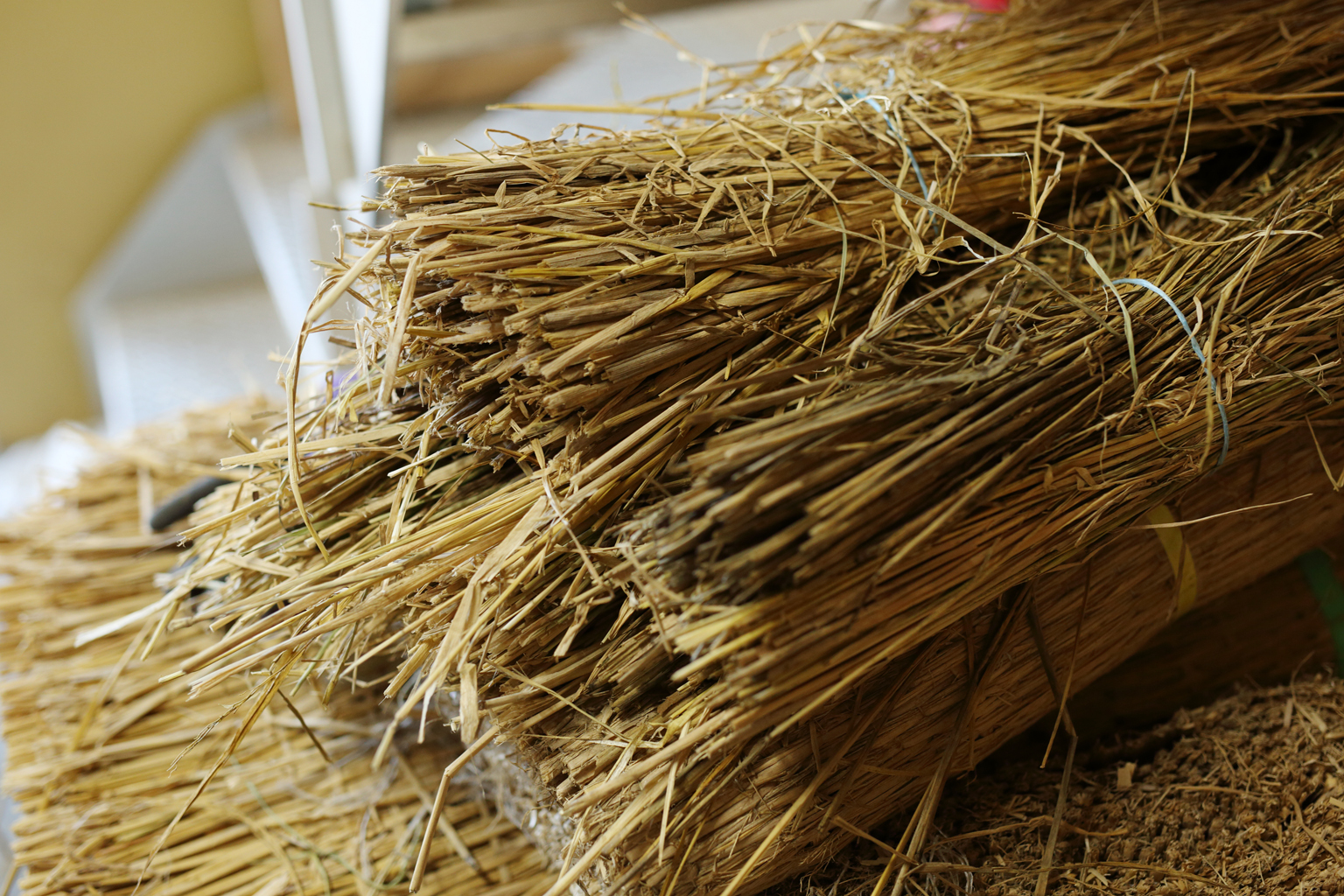
Traditionally, straw—born from the rice harvest—was processed into everyday goods like rope, mushiro mats, and waraji sandals, as well as fuel, animal feed, and more.
Among the many straw products, Nawachu is especially known for shimenawa. Because these sacred ropes are meant for shrines and ritual spaces, the company even leases its own rice fields and oversees the entire process from planting to harvesting and crafting, handled by seasoned artisans.
“About 20 years ago, when demand for straw craft products was beginning to decline, the fourth-generation president started selling online. That led to orders for shimenawa from all over Japan. It was then we realized just how many places had lost the ability to make them. That experience really strengthened our resolve to preserve this part of Japan’s cultural heritage.”
A New Form of Shimenawa for Modern Life
While staying true to traditional techniques, Kubishiro is also forging new paths. In 2023, he launched minori, a modern shimenawa brand designed to function as interior décor. It all started with a request from a friend.
“They wanted to celebrate a store opening with a shimenawa instead of the usual orchids—something they could hang indoors. I made a circular design, and it was much more well-received than I expected. When I posted a photo on social media, the reaction was huge. It made me realize that while shimenawa have traditionally been viewed as sacred and formal, there’s real potential to bring them into everyday spaces through thoughtful design.”
The result was a minimalist design that let the beauty of the straw and rice heads speak for themselves—no frills, just quiet elegance.
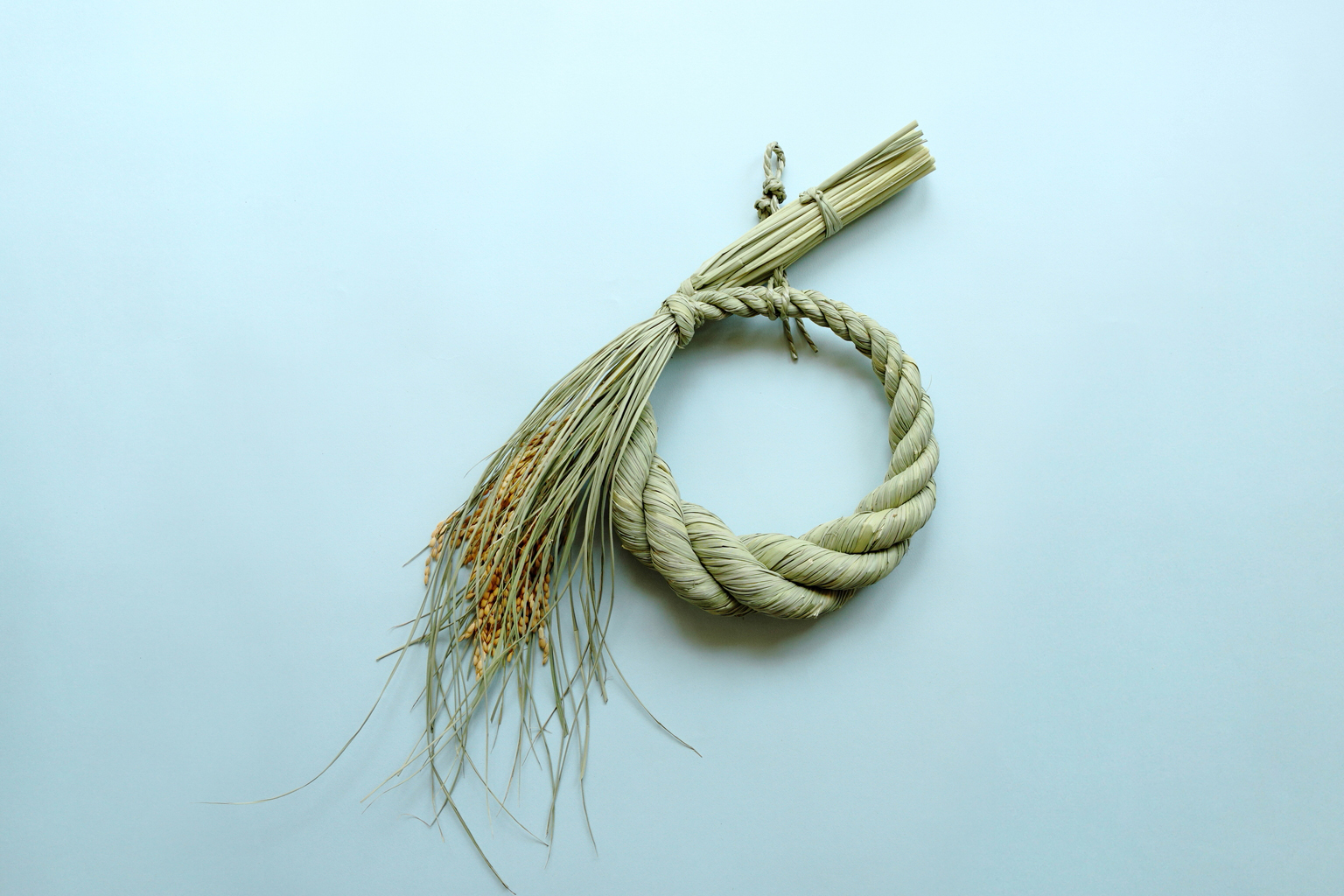
From the minori series, this design called Sha expresses both strength and grace through the curve of the rope and the presence of rice heads.
“It blends naturally into modern homes with Western interiors, and the gentle fragrance of domestic straw adds a sense of calm. We named the brand ‘minori,’ meaning harvest or crop, in hopes it would bring a sense of peace and abundance into daily life.”
To reach new audiences unfamiliar with shimenawa, Nawachu also took the leap into crowdfunding for the first time. The campaign was a major success, far surpassing its funding goal. The minori brand has gone on to gain popularity not only as interior décor but also as a meaningful accent or keepsake at weddings and other celebrations.
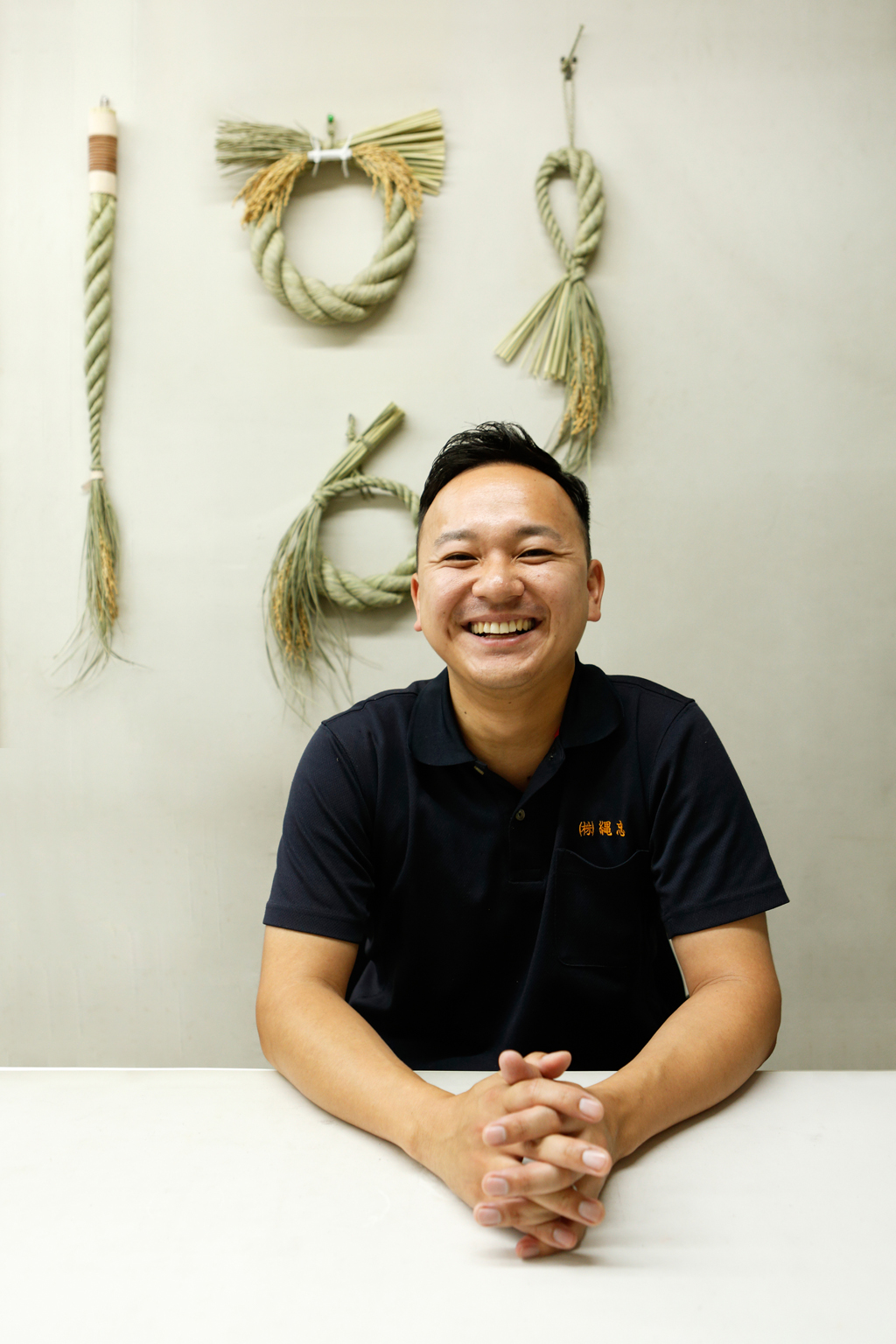
Kubishiro Mitsunobu shares the response to minori and the new potential he sees for shimenawa as design objects.
The Beauty of Twisted Straw, Born from a Craftsman's Experience and Intuition
With guidance from Kubishiro Mitsunobu, we visited the workshop of seasoned shimenawa craftsman Kishino Akira, based in Edogawa City. Kishino has crafted many of Nawachu’s shimenawa over the years, and now single-handedly produces the entire minori line.
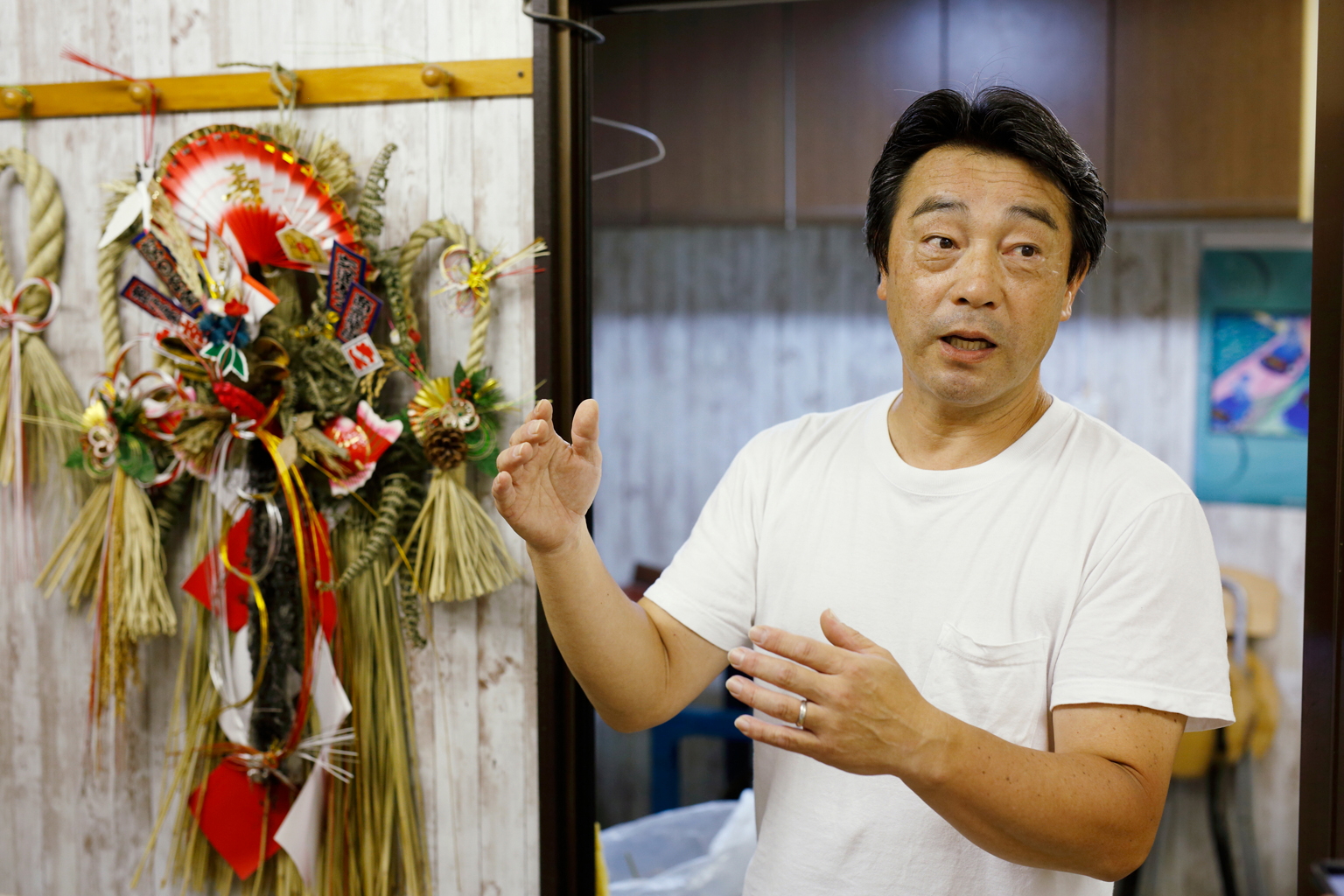
From large shimenawa for shrines to smaller decorations for New Year’s doors, the Kishino family has made domestic shimenawa for generations, alongside their work as rice farmers.
Kishino has been a key partner in Kubishiro’s push to create modern shimenawa suited to contemporary life. Since the beginning, they’ve worked together in a true collaboration of trial, error, and creative exchange. Kishino is both Kubishiro’s mentor and a kindred spirit.
The straw used for shimenawa in this workshop is a special variety called mi-torazu, harvested before the ears of rice appear. It’s dried quickly and stored away from direct sunlight, preserving its lush green hue.
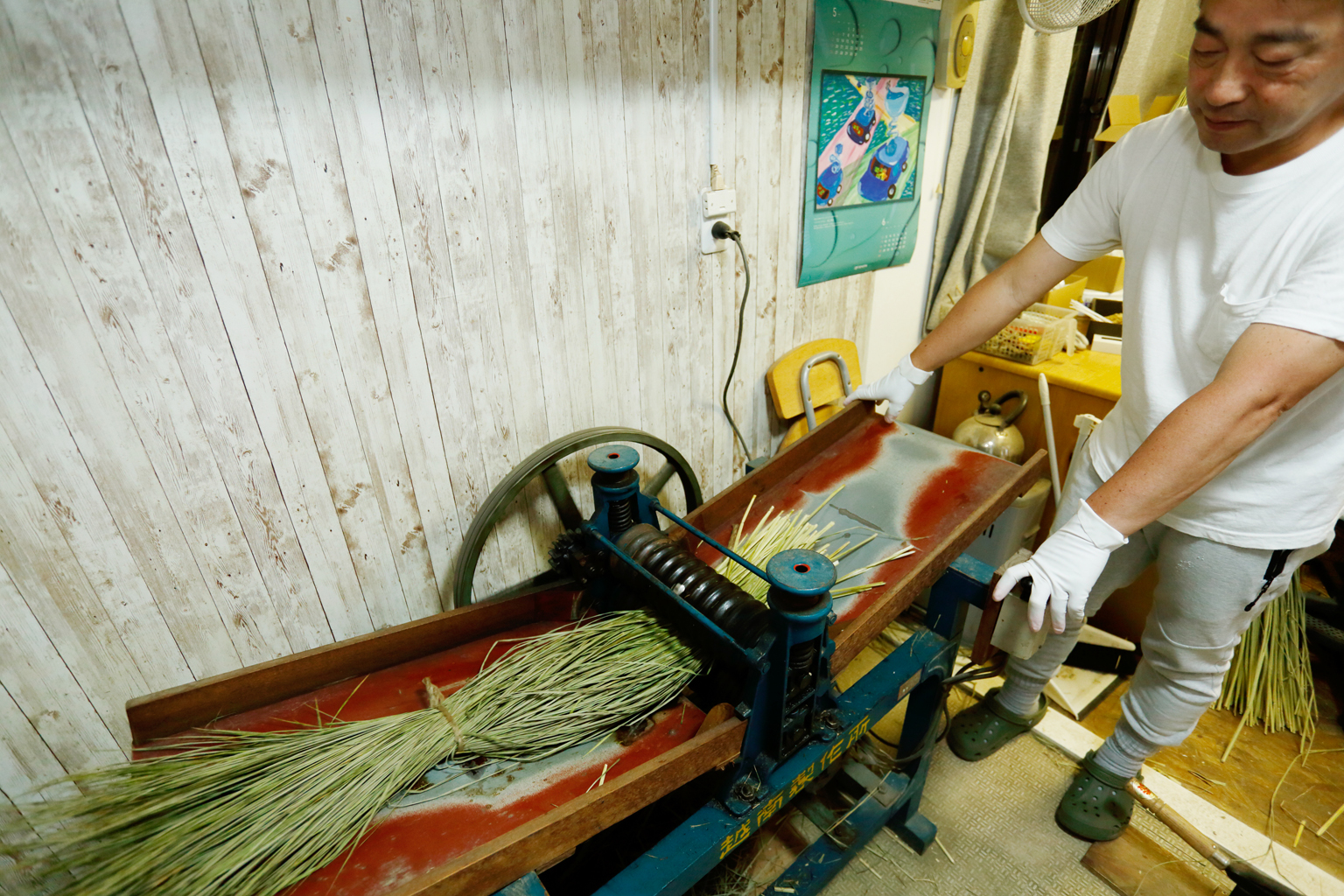
After soaking for about 30 minutes, the dried mi-torazu is softened by striking it with a special roller to prepare it for braiding.
We watched as Kishino began work on a new piece in the minori series: Aya, a freestanding shimenawa. Even though the straw had been softened beforehand, the bundle in his hands held a distinct firmness. Twisting it into shape clearly requires strength.
“Not too tight, not too loose—you have to keep just the right tension all the way through,” Kishino says with a smile. “It’s hard to put into words. The feel of the hands, the right amount of pressure—these things come from years of experience and muscle memory.”
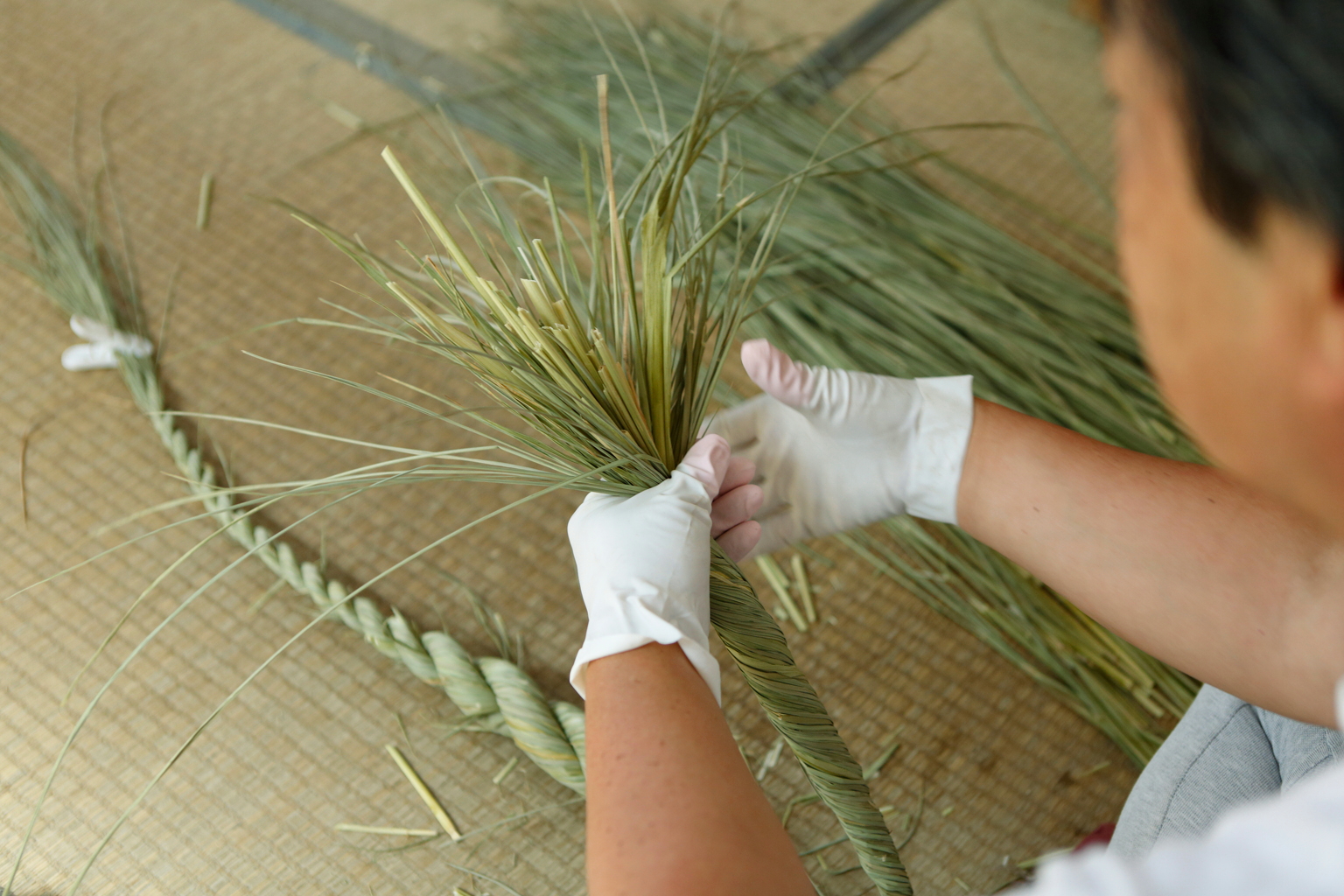
To ensure the twist stays uniform and beautiful, Kishino braids with precision—sometimes using not just his hands, but his feet as well.
For Kishino, whose family has long balanced farming with the making of shimenawa, the launch of minori was a rewarding challenge.
“Traditional shimenawa follow fixed forms, but minori gives us freedom. It’s exciting as a craftsman to have room for creativity. Hearing from Kubishiro that customers are happy with our work—that’s the most rewarding thing of all.”
Thanks to Kishino’s craftsmanship and his uncompromising eye for detail, paired with Kubishiro’s forward-thinking approach, the shimenawa of minori continues to explore new possibilities.
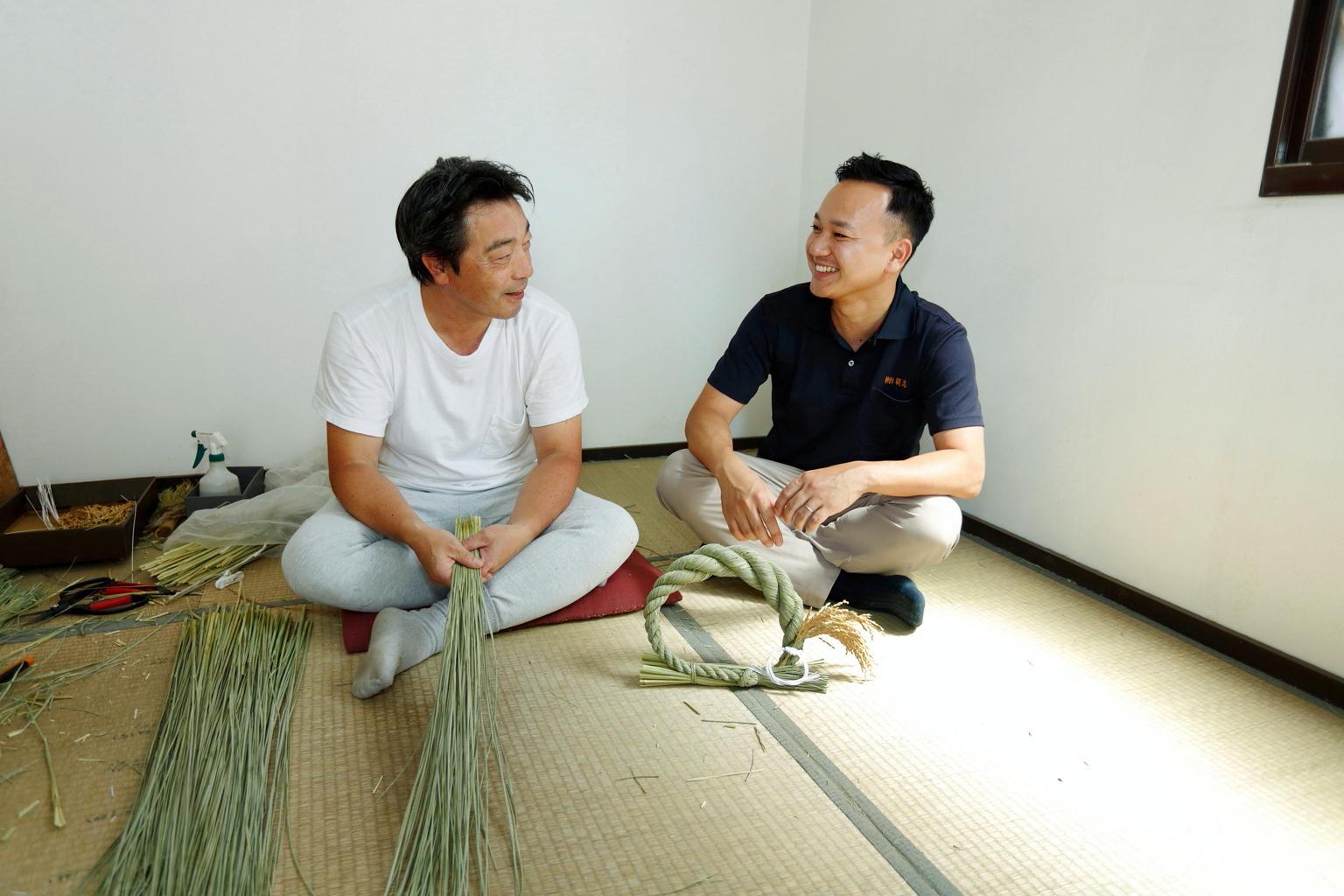
Kishino (left) and Kubishiro (right), sometimes chatting over sake, exchange ideas about shimenawa. Their shared respect for tradition and willingness to innovate is what sustains the future of straw craft.
Rooted in Edogawa City, Reaching Toward the World
Nawachu has carried on business in Edogawa City since its founding in the Meiji era. The company’s base in Koiwa is part of a community where many continue family trades across generations—Kubishiro himself grew up watching his father and grandfather at work.
“I didn’t plan to take over the business during my university days. But around ten years ago, when our online store began gaining traction, my father finally asked me to consider succeeding him. I think he’d held back because he wasn’t confident in the future of straw products,” Kubishiro recalls. “It took some thought, but I made up my mind to carry on what our ancestors had protected for so long.”
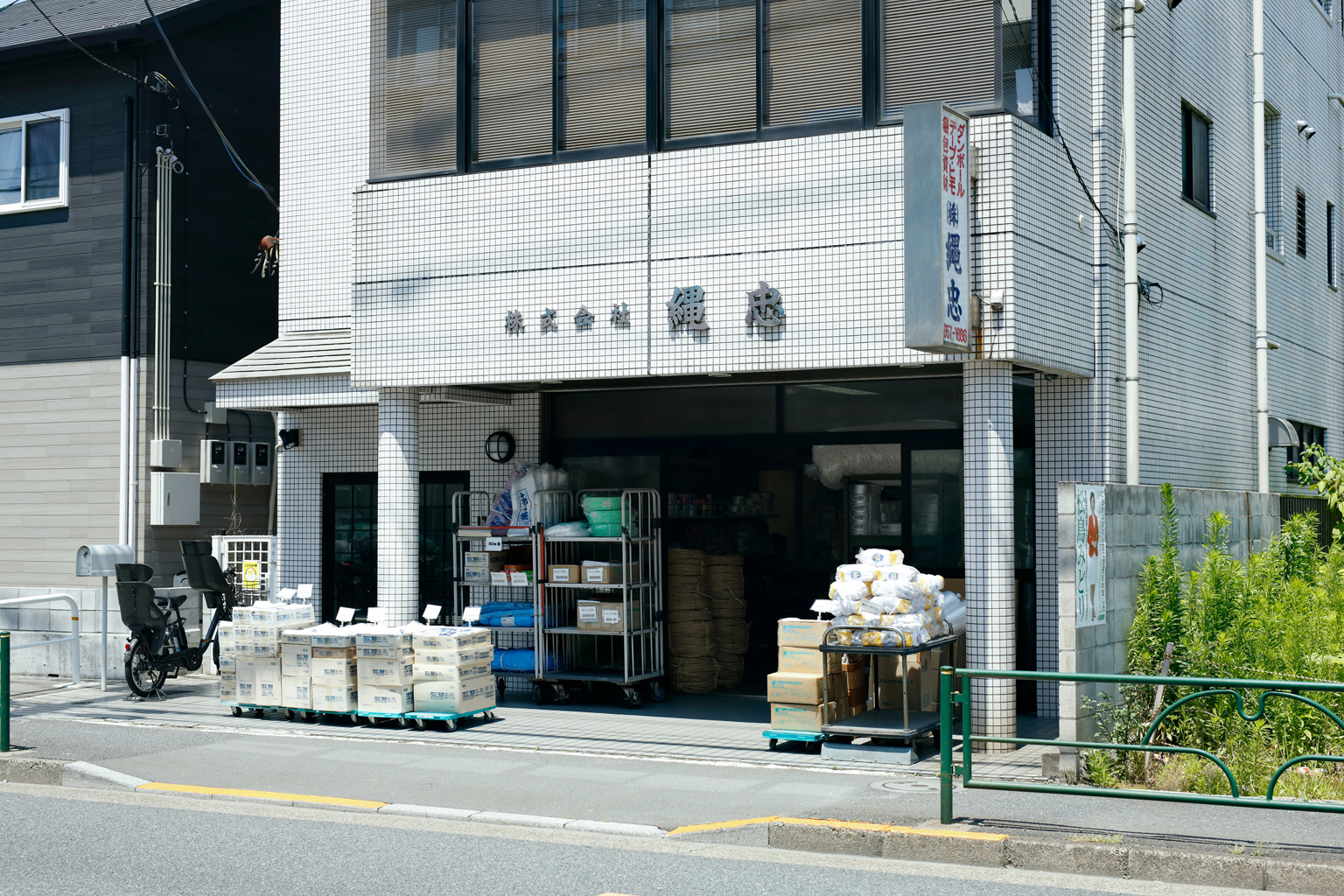
“My family all worked here, so since I was a kid, this office was where I’d say, ‘I’m off!’ and ‘I’m home,’” says Kubishiro, looking back on childhood memories.
“I love the people of Koiwa—the strong ties between neighbors, the way we support one another. I feel like I was raised by this town, and now I want to watch over the next generation here too.” One of Kubishiro’s future goals is to share straw craft with the world. Through minori, Nawachu is actively working to spread the appeal of shimenawa overseas, navigating export regulations around rice straw and preparing for international expansion.
“Preserving tradition is vital—but adapting to the times is just as important,” says Kubishiro. Just like a ripening ear of rice, Nawachu’s next chapter is full of promise.
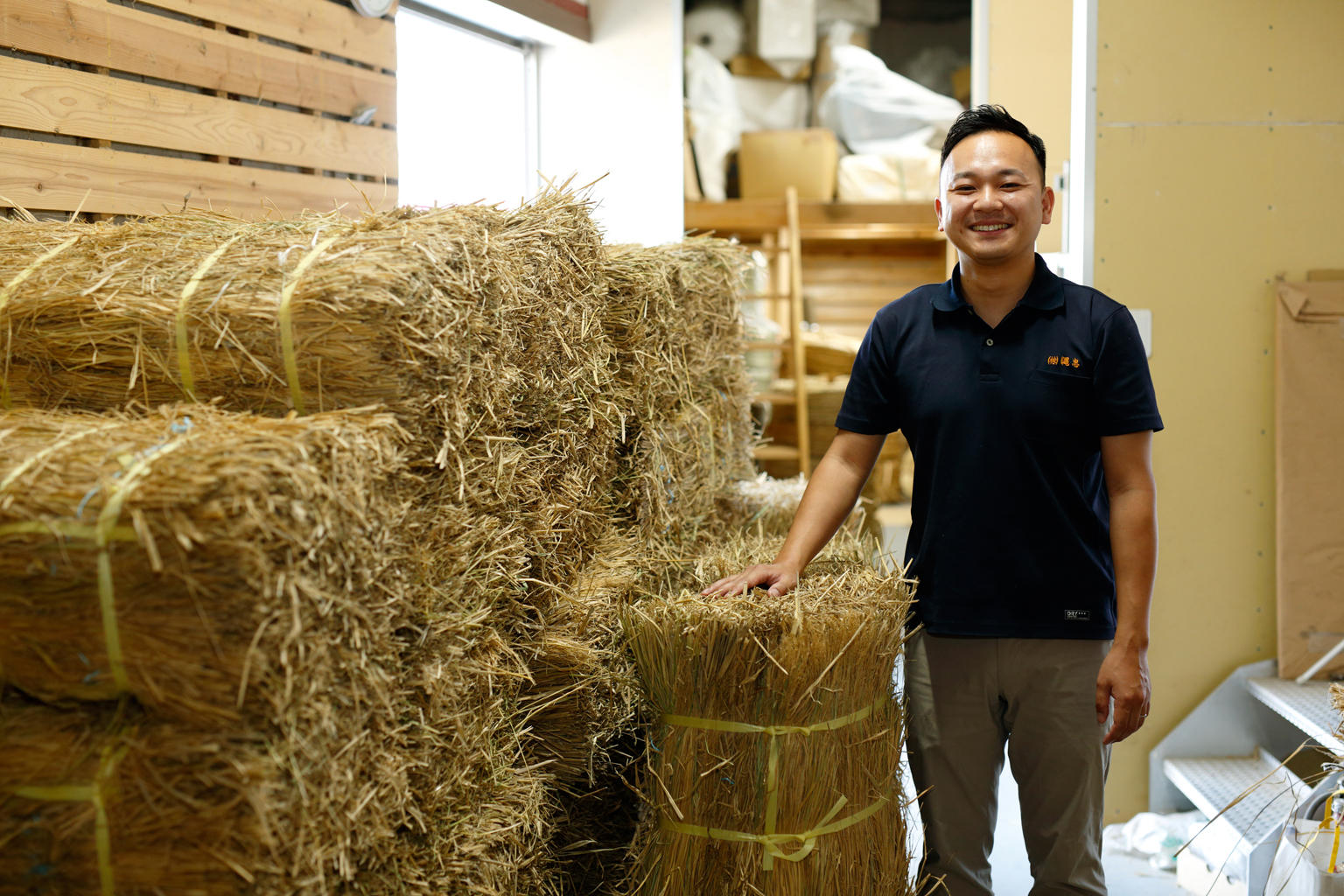
Writing: Kiuchi Aki
Photos: Takeshita Akiko
Introduction of the Artisan
Around 1907, while working as a farmer in Tokyo’s Edogawa City, founder Chuemon began by selling straw ropes and mats, later formally establishing his company in the Koiwa district as Nawaya Chuemon. Under second-generation head Chunosuke, the official company name was contracted to incorporate part of the family’s name, becoming Nawachu, and specialized in the sale of straw products and the manufacture and sale of shimenawa (sacred straw ropes) for shrines and household Shinto altars. In 2023, they launched their new brand “minori” with the concept of bringing shimenawa closer to people’s everyday lives. Sales available both in-store and online.
・Nawachu
・5-1-10 Higashikoiwa, Edogawa-ku, Tokyo
